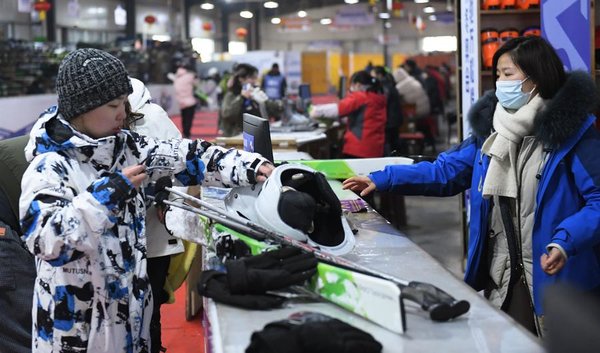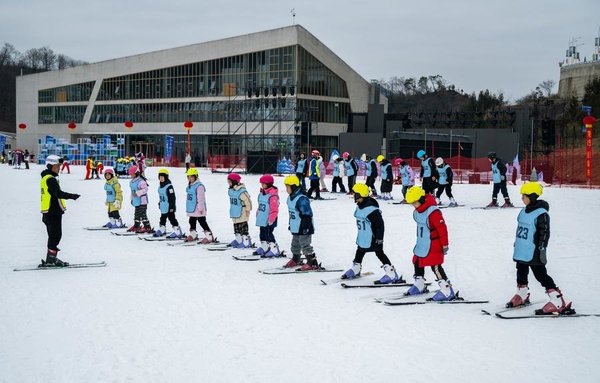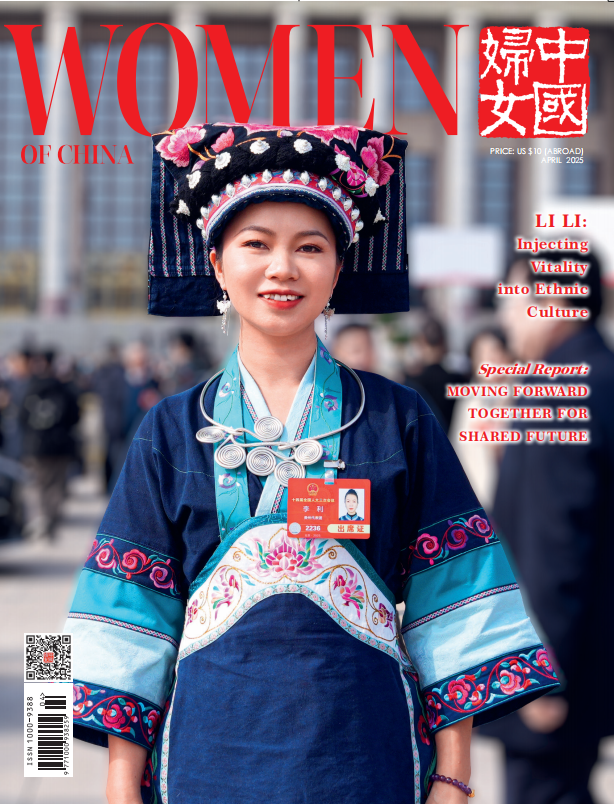Chinese Enterprises Embrace New Opportunities in Ice and Snow Economy
* China's Zhejiang, situated in the subtropical zone, lacks extensive ice and snow resources, yet the thriving ice and snow tourism and sports have injected new vitality into the local manufacturing sector.
* During the 2024-2025 winter season, the number of visitors engaging in ice and snow leisure tourism in China is projected to reach 520 million, with tourism revenue anticipated to surpass 630 billion yuan.
* China has aimed to boost its ice and snow economy as a new growth sector, targeting an economic scale of 1.2 trillion yuan by 2027 and 1.5 trillion yuan by 2030.
HANGZHOU, Jan. 5 (Xinhua) — In a bustling workshop of a sportswear company, workers were racing to fulfill an urgent order of 50,000 pairs of ski goggles, a popular item in the trolleys of megacity shoppers, around late December.
"Our production lines have been running at full tilt," said Pan Xinru, the workshop director of Zhejiang Vista Sports Goods Co., Ltd.
Located in a small coastal county-level city Wenling in Zhejiang Province, a manufacturing hub in eastern China, the company has been producing ski goggles since 2007, primarily for the European and American markets.
 |
| Ski enthusiasts rent ski equipment at a resort in Wenchuan County, southwest China's Sichuan Province, Dec. 27, 2024. [Xinhua/Wang Xi] |
After China successfully hosted the 2022 Beijing Winter Olympics, the company sensed a shift in the market and swiftly adjusted its strategy by increasing investment in the domestic market.
Wang Keli, deputy head of the company's administration department, noted that the sales volume in the domestic market at present accounts for about one-third of the total.
In recent years, enthusiasm for ice and snow sports in China has surged, leading to a year-on-year growth in Vista's order book.
To efficiently handle the influx of orders, the company invested over 17 million yuan (about 2.4 million U.S. dollars) in 2024 to expand its capacity, now operating five state-of-the-art ski goggles production lines with an annual output value of 600 million yuan.
Beyond ski goggles, Vista has expanded its product lines to include snowboards. In 2023, the company secured orders for more than 10,000 snowboards, which generated a production value exceeding 20 million yuan. Their snowboards are particularly sought-after in markets across Beijing, Jilin, Heilongjiang and Xinjiang, all of which are home to several famous ski resorts.
Liu Wen, from Ninghai Xingda Leisure Products Co., Ltd., noted that while their snow sports equipment was initially aimed at international customers, the surge in winter sports enthusiasm — particularly following events like the Beijing Winter Olympics — has sparked a significant rise in domestic interest.
 |
| People fetch ski equipment at a ski resort in Hangzhou, east China's Zhejiang Province, Feb. 22, 2022. [Xinhua/Weng Xinyang] |
"We used to get an occasional order from a merchant or a consumer, but now we're seeing more bulk orders," Liu said.
Liu added that as demand for ice and snow tourism becomes increasingly diversified and quality-driven, the demand for in-depth, personalized travel services is expected to grow explosively, which will undoubtedly benefit the ice and snow equipment industry.
"In-depth travel goes beyond simply admiring ice sculptures, snow landscapes, or enjoying basic skiing. It involves a deeper engagement with ice and snow activities and cultural experiences, which will further unlock the market's potential," Liu said.
Ninghai's ice and snow equipment sector, predominantly specializing in sports poles, has reached an annual production value exceeding 920 million yuan, capturing over 75 percent of the national market share in terms of output value.
In Yiwu, a Chinese city dubbed "the world's supermarket," business owners are also experiencing the growing surge of the ice and snow economy.
Since September 2024, Chen Jing has been swamped with orders. The latest hit is a new model of ice skates that can be converted into inline skates by removing the blades, appealing to customers of all ages, Chen said, adding that sales of snow goggles, skiing protective gear, and related products have surged nearly 50 percent year on year.
Zhuji, renowned for its high-quality socks, has also benefited from the booming wave of ice and snow tourism.
"We roughly estimate that our annual sales exceeded 600,000 pairs in 2024," said Xu Zhongfu, head of Zhuji Yuanjin Textile Co., Ltd. Leveraging the rapid growth of the ice and snow economy in recent years, winter sports socks — particularly ski socks — have become increasingly popular with consumers.
 |
| Children learn skiing at a ski resort in Badong County, central China's Hubei Province, Dec. 27, 2024. [Xinhua/Hu Jingwen] |
Zhejiang, situated in the subtropical zone, lacks extensive ice and snow resources, yet the thriving ice and snow tourism and sports have injected new vitality into the local manufacturing sector and have also fueled local enthusiasm for related activities. According to figures from Zhejiang's sports bureau, there are now 29 ice and snow sports venues in the province, of which 19 are ski resorts.
Zhejiang is just a microcosm of a larger trend. A report published on Sunday by China Tourism Academy noted that during the 2024-2025 winter season, the number of visitors engaging in ice and snow leisure tourism in China is projected to reach 520 million, with tourism revenue anticipated to surpass 630 billion yuan.
China has also aimed to boost its ice and snow economy as a new growth sector, targeting an economic scale of 1.2 trillion yuan by 2027 and 1.5 trillion yuan by 2030, according to guidelines issued by the General Office of the State Council in November 2024.
(Source: Xinhua)
Editor: Wang Shasha
Please understand that womenofchina.cn,a non-profit, information-communication website, cannot reach every writer before using articles and images. For copyright issues, please contact us by emailing: website@womenofchina.cn. The articles published and opinions expressed on this website represent the opinions of writers and are not necessarily shared by womenofchina.cn.








.jpg)

 WeChat
WeChat Weibo
Weibo 京公网安备 11010102004314号
京公网安备 11010102004314号